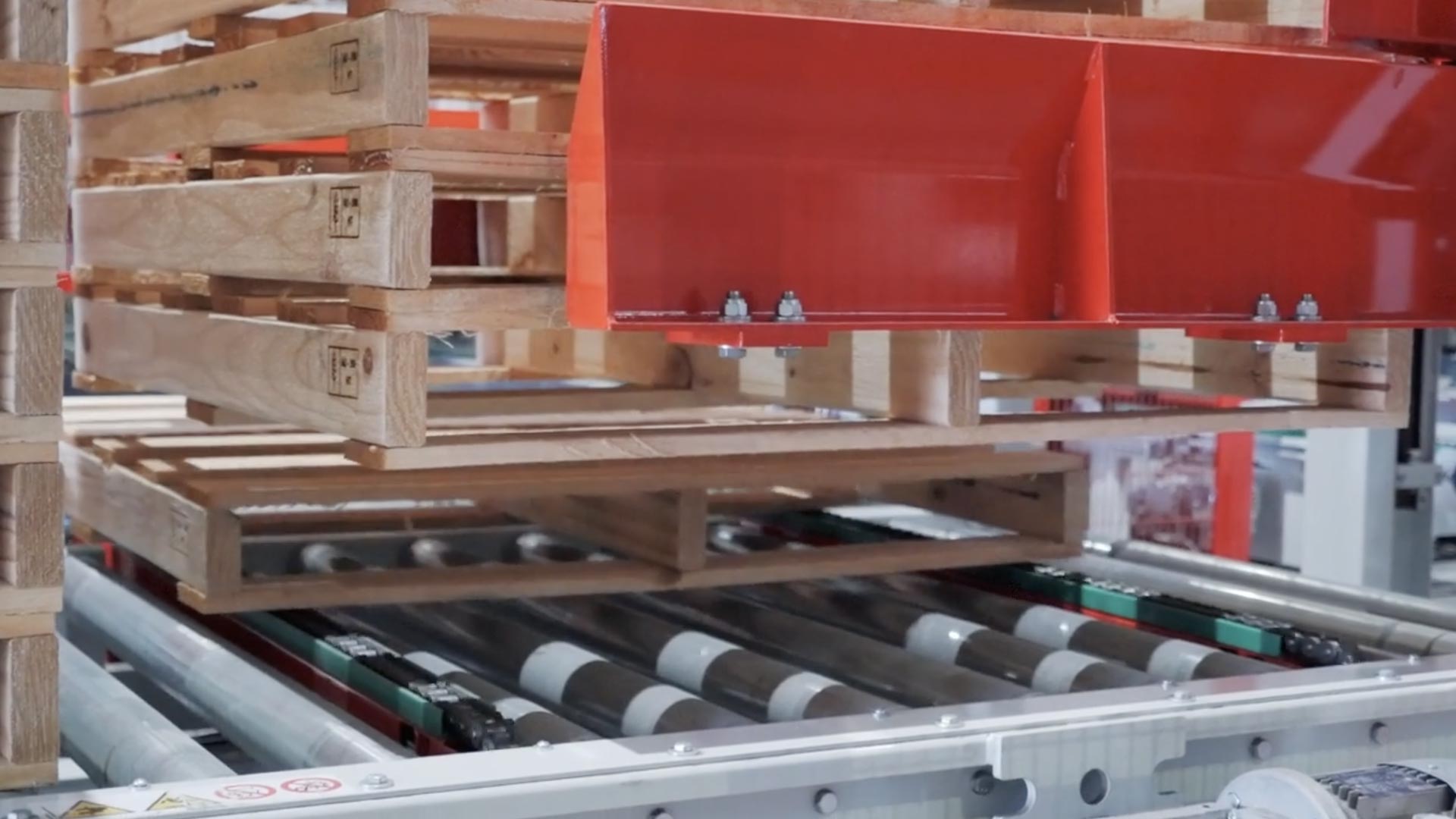
Motorized Roller Conveyors – What they are and how they work
At the heart of pallet and box handling solutions are motorized roller conveyors. As the name suggests, these are a type of roller conveyor equipped with a motor and traction that allows for autonomous movement. Thanks to their use, it is possible to increase the overall efficiency of goods transfer.
Motorized rollers conveyors can be of different types, shapes and sizes, and take advantage of multiple mechanisms, including solutions with transmission roller chains or flat belt rollers. Finally, we also have idle roller conveyors, which are distinguished by the absence of a motor.
Let’s find out together what are the characteristics of each type and their most performing uses for handling packages and palletized loads.
Roller conveyors with transmission roller chains
Among the motorized roller conveyor solutions, we find first of all roller conveyors with transmission roller chains, used above all for horizontal or gently sloping handling of both light and heavy, fragile or light loads, with regular and irregular shapes.
In detail, chain driven roller conveyors consist of a series of rollers which, supported by a structure, allow the handling of packages thanks to the transmission of the drive with tangential chain (continuous) or with chain rings (from roller to roller).
In the roller conveyors with tangential chain, the chain connects the crowns of each roller in a straight line, reducing friction on the gears. The chain can slide indiscriminately in the upper or lower part of the rollers and its characteristics determine the length of the conveyor: the use of double chains or chains with a larger pitch can allow longer distances to be covered. For this reason, this solution of motorized roller conveyors is particularly suitable for handling over long distances and with medium and light loads. It is also the system with the best performance and the lowest construction, constraints and maintenance costs.
On the other hand, in roller conveyors with chain rings, motion is transmitted by a chain that connects each roller to the next through a “ring” system. The mechanism is simple, but requires greater constructional care. Nevertheless, it is the most suitable transmission system when frequent drives (stops and starts) are required. In addition, these roller conveyors are suitable for heavier loads, but only over short distances.
Both solutions of motorized roller conveyors with drive roller chains require regular lubrication of the chain and the use of a recommended speed of max 0.5 m/s to limit operating noise. They also share robustness and rigidity, two characteristics that make them suitable for automatic conveyor systems, assembly stations, operating machines and, in general, for all those applications where idle roller conveyors are not recommended.
Flat Belt Rollers
Motorized flat belt roller conveyors consist of a series of rollers that are driven by a belt, i.e. an elastic material element stretched between the drive drum and the return drum. In this system, pressure rollers keep the belt in contact with the load-bearing rollers, i.e. those in direct contact with the packages: the belt, therefore, running under the load-bearing rollers, transmits motion to them.
This type of motorized roller conveyor allows the transport of a wide variety of packages, as long as they do not weigh more than 30 kg. Transport is generally flat, but it is possible to make a slightly sloping path, taking care to respect the adherence between the roller and the package.
Idle roller conveyors and what differentiates them
The last category to be analyzed are the so-called idle roller conveyors: this type of conveyor is made up of those in which a push or the force of gravity is sufficient to move the objects positioned on the rollers.
This is certainly the main feature that distinguishes idle roller conveyors from motorized roller conveyors. It is in fact a system that does not need a real driving force or a motor: the roller conveyor is simply made up of a succession of cylindrical rollers positioned on a slope that are activated by thrust or under the effect of gravity.
That’s not the only difference, however.
Idle roller conveyors do not oppose the slightest friction, making the packages slide with ease. They are therefore the opposite of motorized roller conveyors, where the adherence between the packages and the transport rollers is crucial for safe handling. This also explains why idle roller conveyors are suitable only for small and medium-sized loads and never for heavy ones.
Now that you know the difference between motorized and idle roller conveyors, you’ll definitely have a clearer idea of which package handling system to use for your reality. And if you’re looking for a conveyor supplier, Pieri is for you.
Contact us: we’ll be happy to provide you with all the information you need to find a reliable, state-of-the-art handling system.
Click here to contact us.
